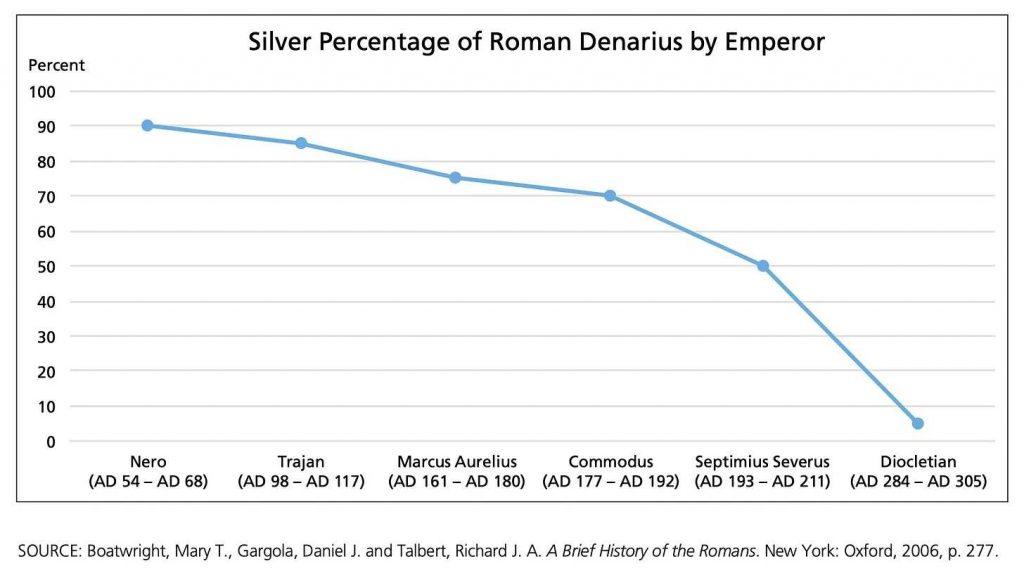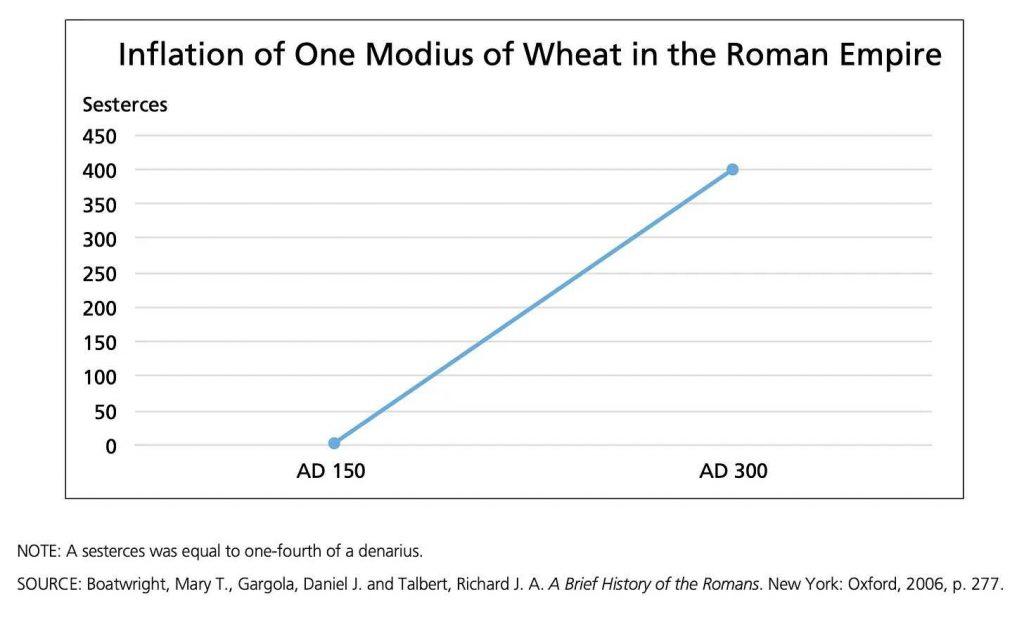This article was originally published by Austin Litman on Proofofwork.ca
Rome had lots of debt and like the US, they couldn’t pay it all. So they produced a higher quantity of coins but with less precious metal content in them. This is called debasing a currency. Rome continued to debase their coins while increasing their debt (like we are doing).
As the currency became less valuable because of the decreasing metal content in the coins, citizens needed way more of them to buy simple things like bread (inflation).
It was also becoming increasingly difficult to pay the army because why would one risk their life for a currency that will be worthless by the time they pass it down to their children? Many soldiers were returning home completely broke after watching their brothers die in battle and leaving their wives unprotected at home. Morale was decreasing fast.
The army was now weak and they couldn’t plunder any more metals from enemies, nor produce enough themselves to sustain their economy. So they had to raise taxes to collect more revenue from citizens. This destroyed what was left of their economy.
By 265 AD, there was only 0.5% silver left in the coins and prices skyrockets by over 1,000% (hyper-inflation). Rome went broke and it was sad.
Nobody should have any money but I, so that I may bestow it upon the soldiers.” – Caracalla





